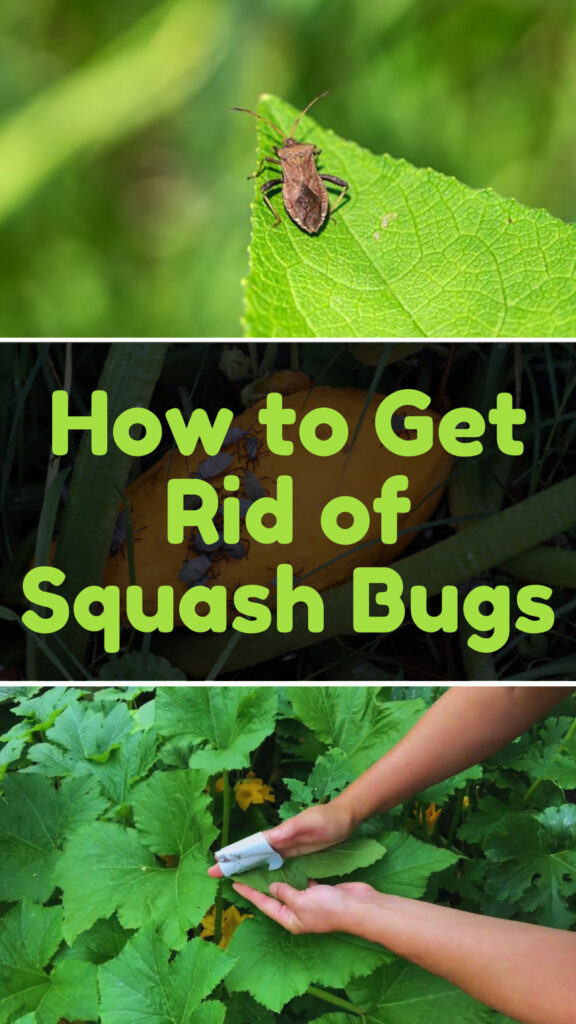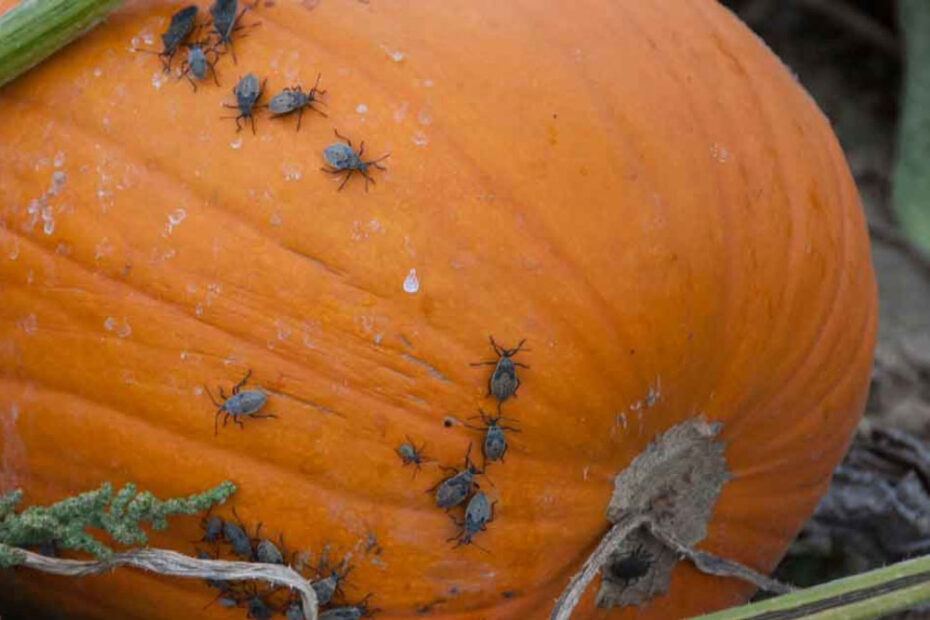Squash bugs can quickly turn your thriving garden into a nightmare, wreaking havoc on your beloved squash plants. These pesky insects are notorious for sucking the sap out of leaves, leading to wilting, yellowing, and eventually plant death. But don’t worryâyou can take effective steps to protect your garden and eliminate these unwelcome guests.
Understanding the life cycle and behavior of squash bugs is crucial for effective control. By identifying them early and employing targeted strategies, you can keep your plants healthy and productive. Ready to reclaim your garden? Let’s jump into the best methods to get rid of squash bugs for good.
Key Takeaways
- Early Identification is Crucial: Recognizing squash bugs by their distinct characteristics and understanding their life cycle helps in timely and effective intervention.
- Preventative Measures Matter: Implementing strategies like choosing resistant plant varieties, practicing crop rotation, and employing companion planting can significantly reduce squash bug infestations.
- Organic Control Options: Organic methods such as handpicking, neem oil, and diatomaceous earth provide eco-friendly solutions for managing squash bugs without harming beneficial insects.
- Chemical Control: In severe infestations, chemical methods including insecticidal soaps and synthetic pesticides can be effective, but should be used judiciously to minimize environmental impact.
- Regular Monitoring and Environmental Management: Consistent inspection and maintaining garden cleanliness are essential practices. Creating an unfavorable environment for squash bugs further aids in managing their population.

Identifying Squash Bugs
Recognizing squash bugs in your garden helps carry out control measures quickly. Look for unique physical traits and understand their life cycle and behavior for accurate identification.
Physical Description
Squash bugs possess distinct physical characteristics, making them easier to identify:
- Color: Adults are typically grayish-brown.
- Shape: Elongated, flat bodies about 0.5 – 0.75 inches long.
- Legs and Antennae: Dark legs and antennae.
- Wings: Membranous wings folded flat over their backs.
Eggs:
- Color: Coppery-brown.
- Shape: Oval, laid in clusters on leaf undersides.
Nymphs:
- Color: Pale green to gray, turning darker as they mature.
- Size: Smaller than adults, lacking fully developed wings.
Life Cycle and Behavior
Understanding a squash bug’s life cycle aids in timely interventions:
- Eggs: Laid on leaf undersides in spring, hatching in 1-2 weeks.
- Nymphs: Pass through five instar stages over 4-6 weeks before reaching adulthood.
- Adults: Overwinter in plant debris, emerging in spring to mate and lay eggs.
- Feeding: Adults and nymphs suck sap from leaves and stems, causing wilting and plant death.
- Activity: Most active in hot, dry weather. Congregate in clusters on plants.
Effective squash bug control begins with accurate identification and a solid understanding of their life cycle. Recognize these pests early to protect your garden from extensive damage.
Preventative Measures
Implementing several preventative measures can help you reduce squash bug infestations and protect your squash plants.
Plant Selection
Choosing the right varieties can make a significant difference. Some squash varieties exhibit resistance to squash bugs.
- Resistant Varieties: Look for squash types such as Butternut, Royal Acorn, and Sweet Cheese pumpkins. These varieties have shown better resistance.
- Healthy Seedlings: Start with strong, healthy seedlings for transplantation. Stressed plants are more susceptible to pest infestations.
- Diverse Planting: Mix resistant varieties with other plants to hinder the spread of bugs.
Crop Rotation
Regularly rotating your crops helps disrupt the life cycle of squash bugs.
- Annual Rotation: Change the location of your squash plants annually. Planting in the same spot year after year encourages pest buildup.
- Soil Health: Use rotation to maintain soil health, as healthier soil supports stronger plants.
- Non-Cucurbit Crops: Involve non-cucurbit crops such as legumes or leafy greens in the rotation cycle to break the pest cycle.
Companion Planting
Use companion planting to deter squash bugs naturally.
- Repellent Plants: Incorporate plants like marigolds, nasturtiums, and radishes around your squash. These plants emit scents that repel squash bugs.
- Trap Crops: Plant small sacrificial crops like Blue Hubbard squash to lure bugs away from your main crop. Check and remove bugs from these plants regularly.
- Pollinator Attractors: Introduce flowers like sunflowers to attract pollinators, which can increase the overall health and yield of your squash plants.
By integrating these preventative strategies, you can significantly reduce the impact of squash bugs on your garden. Employing a combination of resistant varieties, effective crop rotation, and strategic companion planting creates a robust defense against these pests.
Organic Control Methods
Organic control methods provide safe, eco-friendly options for managing squash bugs. Below are effective techniques you can use to keep these pests in check.
Handpicking
Handpicking involves manually removing squash bugs from plants. This method, effective for small to moderate infestations, requires diligence and regular monitoring.
Steps to Handpick Squash Bugs:
- Inspect Plants: Check both upper and underside leaves for eggs, nymphs, and adult bugs.
- Remove Bugs: Use your hands or a small tool to dislodge bugs, dropping them into soapy water to kill them.
- Repeat: Conduct inspections every few days, particularly during peak activity in hot, dry weather.
Neem Oil
Neem Oil, derived from the neem tree, acts as a natural insecticide that disrupts pest life cycles without harming beneficial insects.
Application Steps:
- Dilute: Mix 2 tablespoons of neem oil with 1 gallon of water.
- Spray: Apply the solution to affected plants, ensuring coverage on leaf undersides where bugs commonly hide.
- Repeat: Reapply every 7-14 days, or after heavy rain, for consistent protection.
Diatomaceous Earth
Diatomaceous Earth (DE) consists of fossilized algae, which dehydrate and kill squash bugs upon contact due to its abrasive nature.
- Select Food-grade DE: Ensure you use food-grade DE to avoid harming plants and humans.
- Apply: Dust a fine layer around the base of plants and on leaves, especially the undersides.
- Reapply: Apply after rain or irrigation as DE loses effectiveness when wet.
By integrating these organic control methods, you can effectively manage and reduce squash bug populations, ensuring healthier squash plants and better yields.
Chemical Control Options
Effective chemical control options are available for managing squash bugs. While chemical methods should be used judiciously to minimize environmental impact, they can be essential for severe infestations.
Insecticidal Soaps
Insecticidal soaps offer a lower-toxicity option for controlling squash bugs.
Features:
- Derived from potassium salts of fatty acids
- Safe for humans and pets when used as directed
- Effective against soft-bodied insects including nymphs
Application:
- Mix according to labeled instructions.
- Spray directly on squash bugs, ensuring contact with their bodies.
- Apply in the early morning or late evening to avoid harming beneficial insects.
Synthetic Pesticides
Synthetic pesticides provide a more potent solution for squash bug infestations.
Types:
- Neonicotinoids: Effective but may affect pollinators.
- Pyrethroids: Derived from chrysanthemum flowers but synthesized for potency.
- Carbamates: Versatile but can impact non-target organisms.
Application:
- Select a pesticide labeled for squash bugs.
- Follow all safety and application instructions on the label.
- Apply during cooler parts of the day to reduce evaporation and increase effectiveness.
- Rotate chemical classes to prevent resistance development.
Action Point: Combine chemical control methods with organic and preventative measures for comprehensive squash bug management.
Additional Tips and Tricks
Maximizing your approach to squash bug management with additional strategies can enhance your garden’s resilience and yield. Implementing a few extra tips and tricks can make a significant difference.
Monitoring and Inspection
Regular monitoring and inspection of your plants are crucial. Consistently checking for signs of squash bug activity helps you stay ahead and act swiftly.
Key Monitoring Steps:
- Examine Leaves: Look for coppery-brown egg clusters on the undersides of leaves. Early detection can prevent larger infestations.
- Check Stems: Inspect stems and leaf bases for nymphs and adult squash bugs. Use a magnifying glass if necessary.
- Use Sticky Traps: Place yellow sticky traps around plants to catch and monitor squash bug activity. Replace traps monthly.
Environmental Management
Creating an environment less favorable to squash bugs aids in controlling their population. Environmental management plays a crucial role in squash bug prevention.
- Remove Debris: Eliminate plant debris and leaf litter from the garden to reduce squash bug hiding spots.
- Maintain Cleanliness: Keep the garden clean and free from weeds to minimize alternate hosts for pests.
- Water Management: Use drip irrigation instead of overhead watering to reduce leaf wetness, which can deter squash bugs.
- Encourage Beneficial Insects: Introduce natural predators like tachinid flies and parasitic wasps. These insects prey on squash bugs and can naturally control their population.
By integrating these additional tips and tricks with your existing squash bug management practices, you can ensure a healthier, more productive garden. Regular monitoring combined with strategic environmental management will help you stay ahead of these persistent pests.
Conclusion
Getting rid of squash bugs requires a multifaceted approach, combining identification, prevention, and control methods. By understanding their life cycle and behavior, you can take timely action to protect your squash plants. Use both organic and chemical control strategies as needed, always prioritizing eco-friendly options when possible. Regular monitoring and environmental management will further strengthen your defense against these pests. With these comprehensive strategies, you’ll be well-equipped to maintain a healthy, productive garden free from squash bugs.
Frequently Asked Questions
What are squash bugs?
Squash bugs are pests that damage squash plants by sucking sap, leading to wilting and plant death. They are usually grayish-brown with elongated flat bodies.
How can I identify squash bugs?
You can identify squash bugs by their grayish-brown color, elongated flat bodies, and coppery-brown eggs laid in clusters on the undersides of squash plant leaves.
What is the life cycle of a squash bug?
The squash bug life cycle includes stages from eggs to nymphs to adults. They are most active in hot, dry weather.
What are the most effective ways to control squash bugs?
Effective control of squash bugs includes accurate identification, understanding their life cycle, and using preventative measures and organic or chemical control methods as needed.
What preventative measures can I take to reduce squash bug infestations?
Preventative measures include selecting resistant squash varieties, starting with healthy seedlings, crop rotation, and companion planting with repellent plants like marigolds.
Are there organic methods to control squash bugs?
Yes, organic control methods include handpicking, using neem oil to disrupt their life cycle, and applying diatomaceous earth to dehydrate and kill squash bugs.
When should I consider using chemical control methods for squash bugs?
Chemical control methods should be considered for severe infestations and used judiciously to minimize environmental impact.
What types of chemical control options are available for squash bugs?
Chemical control options include insecticidal soaps for nymphs and soft-bodied bugs and synthetic pesticides like neonicotinoids, pyrethroids, and carbamates.
What additional tips can help enhance squash bug management?
Regular monitoring and inspection of plants, removing debris, maintaining cleanliness, and encouraging beneficial insects can enhance squash bug management.
Can companion planting help deter squash bugs?
Yes, companion planting with repellent plants such as marigolds and trap crops can naturally deter squash bugs.
How do I use neem oil to control squash bugs?
Neem oil can be sprayed on plants to disrupt the life cycle of squash bugs, making it a safe and effective organic control method.
What are the benefits of using diatomaceous earth for squash bug control?
Diatomaceous earth dehydrates and kills squash bugs upon contact, offering an eco-friendly and effective control solution for these pests.
What are the most resistant squash varieties to plant?
Resistant squash varieties include Butternut and Royal Acorn, which can help enhance plant resilience against squash bugs.
